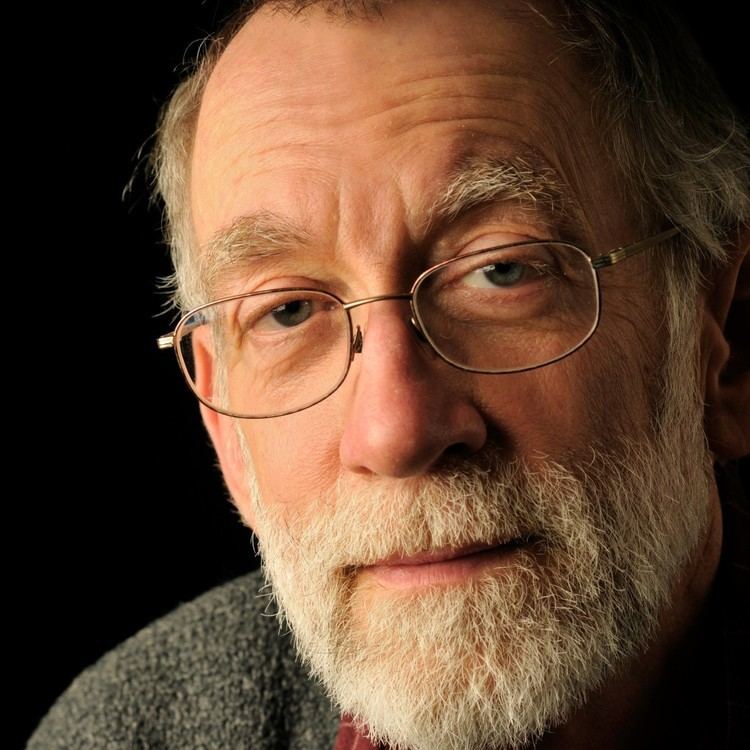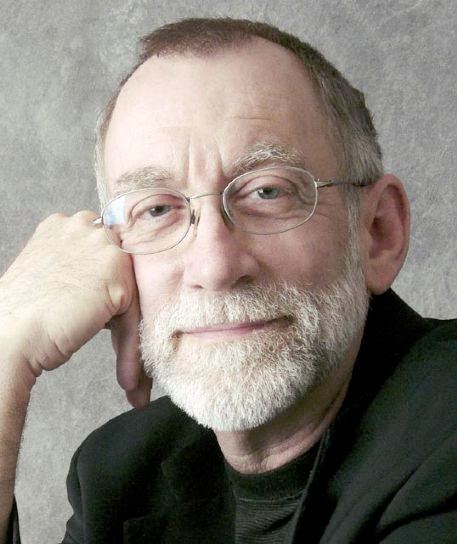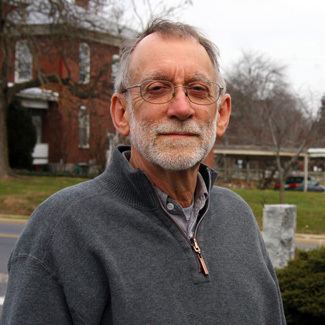Name Howard Zehr | Role Professor | |
 | ||
Major works Changing Lenses: A New Focus for Crime and Justice (3rd ed, 2005); The Little Book of Restorative Justice (2002) Books Little Book of Restorati, Changing lenses, Pickups A Love Story: Pickup Tr, The Little Book of Restorati, The Little Book of Family Gr | ||
Notable ideas Restorative justice | ||
Restorative justice continuum howard zehr ph d emu
Howard J. Zehr (born July 2, 1944) is an American criminologist. Zehr is considered to be a pioneer of the modern concept of restorative justice.
Contents
- Restorative justice continuum howard zehr ph d emu
- Entrevista al dr howard zehr padre de la justicia restaurativa
- Life
- Restorative justice
- Quotes
- Honors
- Works
- References

He is currently the Distinguished Professor of Restorative Justice at Eastern Mennonite University's Center for Justice and Peacebuilding, and co-director of the Zehr Institute for Restorative Justice.

Entrevista al dr howard zehr padre de la justicia restaurativa
Life

The son of a Mennonite church leader in the midwest, Howard Zehr was born in Freeport, Illinois, and raised through his elementary years in two other Illinois municipalities, Peoria and Fisher. His family moved to Indiana for his middle and high school years. He studied at two Mennonite institutions, for a year each – Goshen College in Indiana and Bethel College in Kansas – before finishing his undergraduate degree in European history at Morehouse College, an all-male liberal arts college that is historically black, in Atlanta, Georgia. Zehr was the first white to earn a B.A. from Morehouse when he graduated in 1966. Thanks to the school’s then-Morehouse College president Dr. Benjamin Mays, Zehr was able to complete his schooling through a minority scholarship that Mays assisted him in securing; Zehr graduated second in his class.
He earned an M.A. in European history at the University of Chicago in 1967 and a Ph.D. in modern European history from Rutgers University in 1974. From 1971 to 1978, he taught at Talladega College in Alabama. He then left academia to do grassroots work, directing a half-way house in 1978 in Elkhart, Indiana, and becoming the founder and director (1978–1982) of an Elkhart County program now called the Center for Community Justice. Through this program, Zehr directed the first victim-offender reconciliation program in the United States. For 17 years, 1979–1996, Zehr directed the Office on Crime and Justice under Mennonite Central Committee (MCC) in Akron, PA. While with MCC, Zehr began doing photojournalism, producing professional-quality photographs that were published in MCC journals and books, such as A Dry Roof and a Cow – Dreams and Portraits of Our Neighbors (Akron, Pa: MCC, 1984). As of 2013, he had five photography-centered books to his name, all published by Good Books of Intercourse, Pa.: Doing Life: Reflections of Men and Women Serving Life Without Parole (1996; Japanese edition, 2006); Transcending – Reflections of Crime Victims (2001; Japanese edition, 2006); The Little Book of Contemplative Photography (2005); What Will Happen to Me?, about the children of prisoners (2010); Pickups: A Love Story (2013), a light-hearted look at pickup trucks and their owners.
"Your ability to listen and your respect for human beings, whether they are victims or offenders, is vividly expressed in your two books of photographs and interviews, Transcending – Reflections of Crime Victims, and Doing Life – Reflections of Men and Women Serving Life Sentences," said Thomas J. Porter, JD, executive director of JUSTPEACE Center for Mediation and Conflict Transformation at Hamline University in a ceremony announcing a "lifetime achievement award" for Zehr.
An Ebony magazine reporter wrote: "Howard Zehr, the restorative justice pioneer recognized for building bridges for the voiceless, calls them [the children of prisoners] hidden victims. His latest book, What Will Happen To Me?, places the lens on 30 children whose parents are behind bars. It allows each to be heard as he or she shares thoughts and reflections... The truth of the matter is that approximately 3 million children go to bed with a parent in prison or jail."
Since 1996, Zehr has been a faculty member of Eastern Mennonite University, based at EMU’s Center for Justice and Peacebuilding. He served as the center’s co-director for five years, 2002–2007. He stepped away from full-time teaching and became co-director of the Zehr Institute for Restorative Justice in 2012.
Zehr is a past member of the Victims Advisory Groups of the United States Sentencing Commission and has taught courses and workshops in restorative justice to more than 1,000 people, many of whom lead their own restorative justice-focused organizations. Representatives of the Council for Restorative Justice at Georgia State University, Youth Justice Initiative in Iowa, and Mediation Northern Ireland are among the leaders Zehr has taught. He has given restorative justice presentations in 35 states and 25 countries. His impact has been especially significant in the United States, Brazil, Japan, Jamaica, Northern Ireland, Britain, Ukraine, and New Zealand, a country that has restructured its juvenile justice system into a family-focused, restorative approach. The impact of New Zealand's restorative approach is outlined in The Little Book of Family Group Conferences, New Zealand Style, co-authored by Zehr.
Restorative justice
"No person has done more to inspire the restorative imaginations of citizens of this planet than Howard Zehr. He has been the great teacher who has invited us to sit beside him to see what he can see through his restorative lens."
Zehr's contributions to the field date to the late 1970s, when he was a practitioner in the foundational stage of the restorative justice movement. He has led hundreds of events internationally that focus on restorative justice, victim-offender conferencing, judicial reform and other criminal justice issues.
In Restoring Justice–An Introduction to Restorative Justice, Daniel W. Van Ness and Karen Heetderks Strong say that the term "restorative justice" was likely coined by Albert Eglash in 1958 when he distinguished between three approaches to justice: (1) "retributive justice," based on punishment; (2) "distributive justice," involving therapeutic treatment of offenders; and (3) "restorative justice," based on restitution with input from victims and offenders.
Zehr's book Changing Lenses–A New Focus for Crime and Justice, first published in 1990, is credited with being "groundbreaking," one of the first to articulate a theory of restorative justice. It has been translated into seven languages. The title of this book refers to providing an alternative framework for thinking about – or new lens for viewing – crime and justice. Changing Lenses says that in a "retributive justice" framework, crime is an offense against the state, whereas in a restorative justice framework, crime is viewed as a violation of people and relationships. The book made reference to the positive results of efforts in the late 1970s and 1980s at victim-offender mediation, pioneered in the United States by Howard Zehr, Ron Claassen and Mark Umbreit.
A number of scholars believe it is not a coincidence that Mennonites in North America, like Zehr and Claassen, and the social-action arm of their church-community, Mennonite Central Committee, played major roles in popularizing the theory and practices of restorative justice. "[T]he antinomian groups advocating and supporting restorative justice, such as the Mennonites (as well as Amish and Quaker groups), subscribe to principled pacifism and also tend to believe that restorative justice is much more humane than the punitive juvenile and criminal justice systems."
By the second half of the 1990s, the expression "restorative justice" had become popular, evolving to universal usage by 2006. The restorative justice movement has attracted many segments of society, including "police officers, judges, schoolteachers, politicians, juvenile justice agencies, victim support groups, aboriginal elders, and mums and dads."
"Restorative justice is a fast-growing state, national and international social movement that seeks to bring together people to address the harm caused by crime," write Mark Umbreit and Marilyn Peterson Armour. "Restorative justice views violence, community decline, and fear-based responses as indicators of broken relationships. It offers a different response, namely the use of restorative solutions to repair the harm related to conflict, crime, and victimization."
In Changing Lenses, Howard Zehr describes restorative justice as focusing on the harms done, and consequent needs and obligations, of all parties involved (victims, offenders and the communities in which the harm occurred). He sets forth these six guiding questions:
- Who has been hurt?
- What are their needs?
- Whose obligations are these?
- What are the causes?
- Who has a stake in the situation?
- What is the appropriate process to involve stakeholders in an effort to address causes and put things right?
The growth of restorative justice has been facilitated by NGOs dedicated to this approach to justice, such as the Victim Offender Mediation Association, as well as by the establishment of academic centers, such as Zehr's Center for Justice and Peacebuilding at Eastern Mennonite University in Virginia, the University of Minnesota's Center for Restorative Justice and Peacemaking, the Community Justice Institute at Florida Atlantic University, the Center for Peacemaking and Conflict Studies at Fresno Pacific University in California, and the Centre for Restorative Justice at Simon Fraser University in British Columbia, Canada.
In the afterword to the third edition of Changing Lenses, Zehr acknowledges the debt that restorative justice owes to many indigenous traditions. "Two peoples have made very specific and profound contributions to practices in the field – the First Nations people of Canada and the U.S., and the Maori of New Zealand... [I]n many ways, restorative justice represents a validation of values and practices that were characteristic of many indigenous groups," whose traditions were "often discounted and repressed by western colonial powers."
Zehr has raised awareness that judicial punishment is a social choice, rather than being the only possible response to crime, and that a more socially productive, healing choice can emerge through the application of restorative justice. Zehr argues that punishment – or inflicting suffering as repayment for harm done – rarely results in healing for anybody and often makes matters worse.
Congruent with his Mennonite Church USA tradition, Zehr links restorative justice practices to the Judeo-Christian concept of Shalom: "Emphasizing 'right relationships' between individuals, between groups of people, between people and the earth, and between people and the divine, Shalom declares an ultimate allegiance to respecting life in all its forms... [It] encourages us to see the nurturing of this sacred relational web as our ultimate calling."
Quotes
How is restorative justice defined? "Restorative justice is a process to involve, to the extent possible, those who have a stake in a specific offence and to collectively identify and address harms, needs and obligations, in order to heal and put things as right as possible." Howard Zehr in The Little Book of Restorative Justice
What does restorative justice try to do? "Restorative justice requires, at minimum, that we address victims' harms and needs, hold offenders accountable to put right those harms, and involve victims, offenders, and communities in this process." Howard Zehr in The Little Book of Restorative Justice
Honors
Selected awards and honors:
Works
Howard Zehr is the author, co-author or editor of about 22 books, plus the source of dozens of chapters, op-ed pieces, and other presentations. He is widely interviewed by or quoted in the media. Zehr's list of publications includes:
